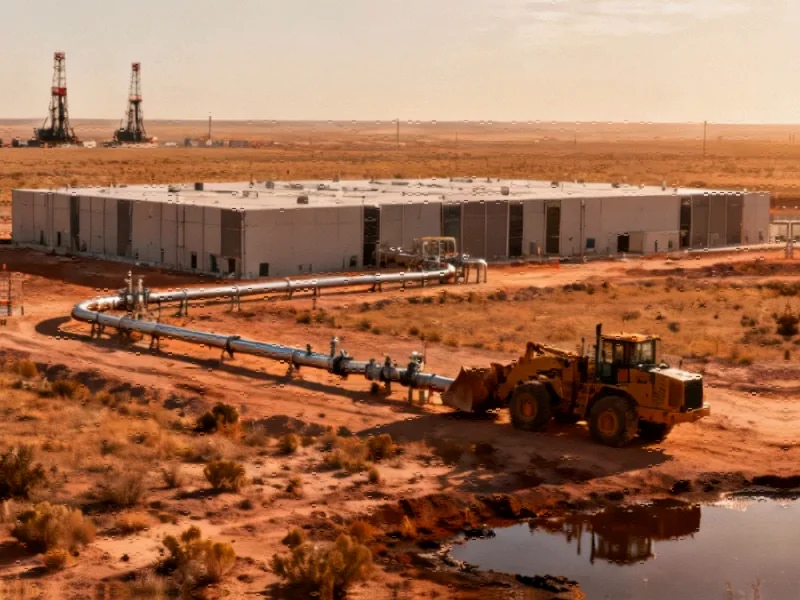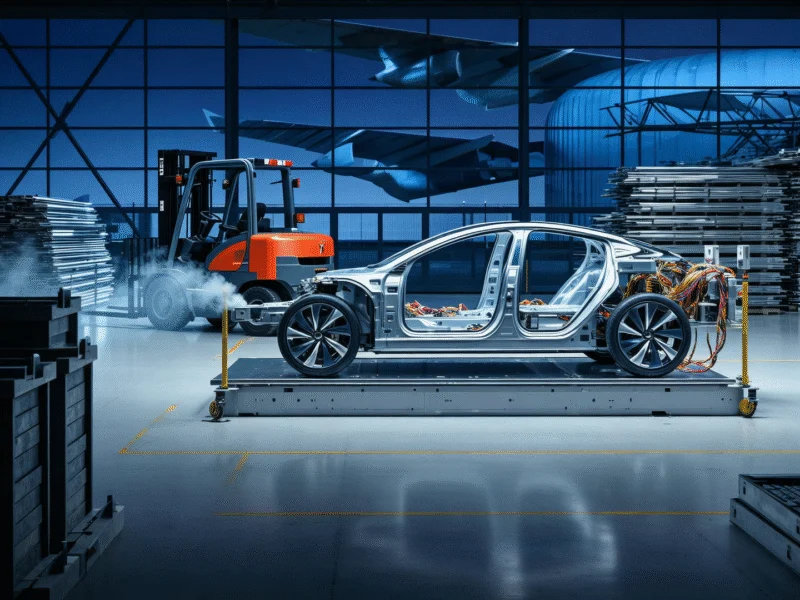AI’s Growing Energy Demands Spark Fossil Fuel Renaissance
The rapid expansion of artificial intelligence is creating an unexpected resurgence for the natural gas industry, according to multiple reports. Major AI companies are building massive data centers near gas production sites, often generating their own power directly from fossil fuels. This trend represents a significant shift in energy infrastructure development that AI companies are pursuing despite growing environmental concerns.
Sources indicate that this development has been largely overshadowed by more positive narratives about AI’s potential benefits in healthcare and climate solutions. However, the scale of this fossil fuel infrastructure buildout could reshape communities and raise difficult questions about the environmental costs of artificial intelligence technologies.
Texas Becomes Ground Zero for AI Energy Expansion
Recent developments in West Texas highlight the trend. According to reports, AI coding assistant startup Poolside is constructing a data center complex on more than 500 acres approximately 300 miles west of Dallas. The facility, dubbed Horizon, will generate two gigawatts of computing power—equivalent to the Hoover Dam’s entire electric capacity—by tapping natural gas from the Permian Basin, where hydraulic fracturing is the dominant extraction method.
Poolside is developing the facility with CoreWeave, a cloud computing company that reportedly provides access to more than 40,000 Nvidia AI chips. Analysts suggest this represents what some are calling an “energy Wild West” as companies race to secure power for energy-intensive AI operations.
Major Players Embrace Gas-Powered Strategy
Poolside is far from alone in this approach. According to the Associated Press, OpenAI CEO Sam Altman recently toured his company’s flagship Stargate data center in Abilene, Texas, where he acknowledged: “We’re burning gas to run this data center.” The complex requires approximately 900 megawatts of electricity across eight buildings and includes a new gas-fired power plant using turbines similar to those that power warships.
Meta Platforms is pursuing a similar strategy in Louisiana’s poorest region, Richland Parish, where the company plans to build a $10 billion data center the size of 1,700 football fields. Utility company Entergy will spend $3.2 billion to build three large natural-gas power plants with 2.3 gigawatts of capacity to feed the facility by burning gas extracted through fracking in the nearby Haynesville Shale.
Community Impacts and Environmental Concerns
Local residents near these projects have expressed significant concerns. According to reports, Arlene Mendler lives across the street from OpenAI’s Stargate facility and told the Associated Press that construction has “completely changed the way we were living.” She moved to the area 33 years ago seeking “peace, quiet, tranquility” but now contends with constant construction noise and bright lights that have spoiled her nighttime views.
Water usage represents another major concern in drought-prone regions. While companies like Oracle claim their facilities will require minimal water after initial fill-ups for closed-loop cooling systems, researchers suggest these estimates may be misleading. Shaolei Ren, a University of California, Riverside professor who studies AI’s environmental footprint, told the AP that such systems require more electricity, which means more indirect water consumption at the power plants generating that electricity.
Geopolitical Justifications and Policy Support
When questioned about the environmental implications, AI companies often point to geopolitical competition. Chris Lehane, OpenAI’s vice president of global affairs, argued in a recent interview that the United States needs to generate “in the neighborhood of a gigawatt of energy a week” to compete with China’s massive energy buildout of 450 gigawatts and 33 nuclear facilities constructed in the last year alone.
This perspective has found support at the highest levels of government. The Trump administration’s July 2025 executive order fast-tracks gas-powered AI data centers by streamlining environmental permits, offering financial incentives, and opening federal lands for projects using natural gas, coal, or nuclear power—while explicitly excluding renewables from support. This approach to infrastructure development has generated considerable debate among policy experts.
Questioning the Necessity of New Construction
One key question largely absent from the conversation is whether all this new capacity is actually necessary. According to a Duke University study, utilities typically use only 53% of their available capacity throughout the year, suggesting significant room to accommodate new demand without constructing new power plants.
The Duke researchers estimate that if data centers reduced electricity consumption by roughly half for just a few hours during annual peak demand periods, utilities could handle an additional 76 gigawatts of new load—effectively absorbing the 65 gigawatts data centers are projected to need by 2029. Such flexibility could provide a reprieve from the rush to build natural gas infrastructure, giving utilities time to develop cleaner alternatives while supporting efficiency improvements across sectors.
Financial Structures and Long-Term Implications
The financial arrangements supporting this buildout raise questions about long-term impacts. Meta has reportedly guaranteed it will cover Entergy’s costs for the new Louisiana generation for 15 years, while Poolside’s lease with CoreWeave runs for a similar period. What happens to utility customers when these contracts expire remains uncertain, with analysts suggesting residents may face soaring electricity bills to finance today’s investments long after tech companies’ commitments end.
Meanwhile, substantial private investment is flowing into alternative energy solutions. According to reports, a group of non-revenue-generating energy companies have collectively ballooned in value based on expectations that they will eventually power these data centers with cleaner alternatives like small modular reactors and advanced solar installations.
Balancing Innovation and Environmental Responsibility
As the AI industry continues its rapid expansion, the tension between technological progress and environmental sustainability appears likely to intensify. While companies position natural gas as the pragmatic answer to AI’s exploding power demands, the speed and scale of this fossil fuel buildout deserves more attention than it’s currently receiving, according to industry analysts monitoring related innovations in the energy sector.
The most pressing concern for many observers is that the communities hosting these facilities—who will bear the long-term financial and environmental consequences—never asked for these developments in the first place. As the industry navigates these complex challenges, balancing competitive pressures against environmental and community impacts remains an unresolved challenge with significant implications for the future of both artificial intelligence and energy infrastructure.
This article aggregates information from publicly available sources. All trademarks and copyrights belong to their respective owners.
Note: Featured image is for illustrative purposes only and does not represent any specific product, service, or entity mentioned in this article.



